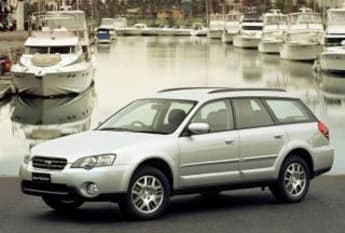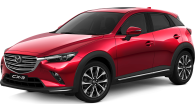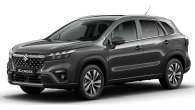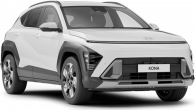"Make it all the way into Palm Valley?" he asks.
After years of pumping diesel into heavyweight Outback workhorses such as Toyota LandCruisers and Nissan Patrols, he doesn't want to believe the Subaru Outback has done the same job as the bush battlewagons in getting to Palm Valley in the Northern Territory.
He's not convinced, even after we assure him we've made it right to the end of the rocky 21km track into the beautiful valley.
Palm Valley is an oasis, the sort of attraction that lures tourists from all over the world. They come to marvel at the escarpments, the ghost gums that mark the dry riverbed, and the lushness of the palms themselves.

It is also a destination for "grey nomads" – cashed-up baby boomers making a once-in-a-lifetime trip around Australia.
It's estimated as many as 15,000 Australians are touring their wide brown land at any one time.
These days, doing a lap of the country isn't a testing task if you stick to the bitumen. And there is a lot of bitumen in the Outback.
But if you want to tow a caravan or camper trailer and explore the most beautiful sites, you need a vehicle capable of negotiating rough tracks.
Buying a brawny 4WD such as a LandCruiser or Patrol is one option. The biggest are capable of hauling a caravan and getting to the most out-of-the-way destinations with minimal fuss and no fear of getting stranded.
But they're not the most comfortable for highway cruising. They guzzle fuel – and that's painful at Outback prices – and when the trip is over, you're stuck with a leviathan unsuitable for city use.
The alternative is one of the newer softroaders or crossovers such as the Subaru Outback 3.0R.
We are in the tougher jacked-up version of the AWD Liberty wagon as we bounce along to Palm Valley.
Subaru Australia has done a lot of work to boost the Outback's reputation in the bush, including lifting its towing capacity progressively from a miserable 1200kg to 1800kg.
This was more involved than just bolting in a bigger motor, though going to the six-cylinder "boxer" engine and enlarging it to 3.0 litres were the final steps to 1800kg. It now has 16 per cent more power but, just as importantly, 297Nm of torque at 4200 revs.
Subaru engineers have also improved the engine's cooling passages to increase coolant flow and upgraded the radiator and suspension. As well, they have developed a factory-approved towing pack.
When you add the pack to the Outback you get a towbar developed by Hayman-Reese, a wiring loom to power the trailer's electrics and, on automatic versions, an oil cooler.
The towing increase moves the Outback up the scale of contenders when it comes to choosing a 4WD for the big trip, but there's nothing like getting a feel for it first-hand.
That's why we are leaving Alice Springs in a convoy of Outback 3.0R wagons hitched to various Jayco camper trailers.
Jayco is Australia's top-selling brand when it comes to poptop caravans and camper trailers.
They're simple to erect at the end of a day's driving, and with practice they can be set up in less than five minutes and taken down just as quickly.
With Jayco's optional Outback pack, poptops such as the Flamingo can go with you when you leave the beaten track.
Still, we drop the trailers at Hermannsburg before we leave for Palm Valley. The valley is 21km from Hermannsburg, an old Lutheran mission famous for once being home to artist Albert Namatjira.
The bitumen ends soon after we leave Arapinta Drive, the main road from Alice Springs 133km away to the east, and it's replaced by the red dirt road so common in the Outback.
A few kilometres later we drop down to the dry bed of the Finke River and continue along a rocky track. Negotiating a few deep, sandy stretches is no problem, and neither is the odd waterhole. Not until the last 6km is the Outback put to a more serious test over rocky ground with deep washaways and drop-offs. Its 200mm clearance, up 50mm from the Liberty wagon, allows it to get over every obstacle.
With Subaru's AWD system, the Outback goes much farther than its urban looks suggest.
But the news isn't as good on the camping front, and it's no surprise that towing in the Outback has a price.
The Outback's fuel consumption, normally about 12 litres/100km, climbs to 16 when towing a 3m, 960kg Finch camper trailer.
When it has to haul the larger Expanda poptop, which weighs about 1260kg, fuel consumption jumps to 20 litres/100 km.
Our trek to Palm Valley proves the Outback can get to out-of-the-way destinations, but back on the highway it is as comfortable and as cultured as any in the latest Liberty lineup.
Subaru Outback 2004: 2.5i
| Engine Type | Inline 4, 2.5L |
|---|---|
| Fuel Type | Unleaded Petrol |
| Fuel Efficiency | 9.1L/100km (combined) |
| Seating | 5 |
| Price From | $3,410 - $5,390 |
Pricing Guides


















.png)








.jpg)
.jpg)
.jpg)
.jpg)